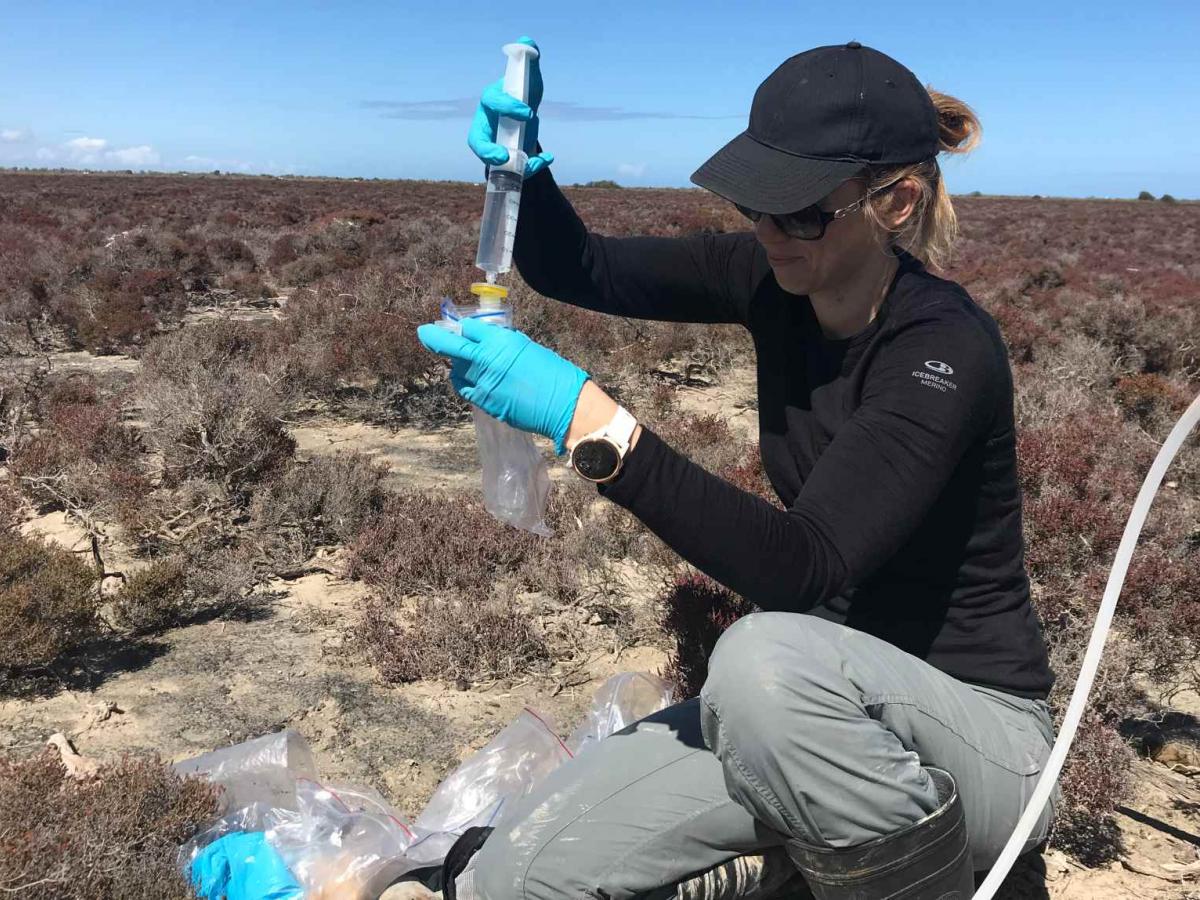
Emily Leyden sampling mangrove-salt marsh environments at Sandy Point, North of Adelaide. Photos supplied by Emily Leyden.
University of Adelaide scientists have developed a new simple, inexpensive and fast method to analyse sulfur isotopes, which can be used to help investigate chemical changes in environments such as oceans, and freshwater rivers and lakes.
Published in Talanta, the research opens up potential for new environmental applications of the method, such as tracing the effect of sea level rise, including detection of seawater intrusion into freshwater systems.
"Sulfur isotopes can tell us a great deal about Earth cycles both now and in the past," said lead author PhD student Emily Leyden from the University of Adelaide's School of Biological Sciences.
"Different water sources have different levels of sulfur isotopes within them. The processes that occur within an environment such as the intrusion of seawater into freshwater systems, and oxidation of acid sulfate soils, can change these ratios. By analysing sulfur isotope ratios we can gain important insights into how environments are changing."
The traditional method of measuring sulfur isotopes is known as mass spectroscopy (MS), where samples are ionized (split into their ions) and the ions of interest in the samples are measured depending on their mass to charge ratio, which differs between isotopes of the same chemical element.
The traditional method has been notoriously difficult, as the mass to charge ratio amongst ions can disperse and overlap, which can make the results hard to differentiate. Sulfur can usually only be measured reliably if there is complex chemical purification before analysis, which is time consuming, difficult and expensive.
As part of Ms Leyden's PhD study, a team including members from the University of Adelaide's Metal Isotope Group with the School of Physical Sciences, the School of Biological Sciences and Adelaide Microscopy, with scientists at Flinders University, worked together to develop a novel method to measure sulfur isotopes using an inductively coupled plasma (ICP) MS instrument.
The new instrument enabled the team to solve the overlapping issue (known as spectral interference) by combining sulfur with another element (oxygen in this case) to increase the mass to charge ratio in order to lower the risk of spectral interference. The sulfur isotopes can then be measured accurately without the need for complex and time consuming sample purification.
"It is particularly timely and important given there is rapid global environmental change, and the method enables easier detection of seawater intrusion into freshwater systems due to sea-level rise."Associate Professor Luke Mosley.
In the study, the University of Adelaide scientists simulated how the method would work in a real world scenario by tracing seawater flooding into a range of different coastal environments in South Australia.
Following flooding, the original sulfur isotope of the soil water clearly changed to that of the seawater isotope. The sulfur isotope ratios of the samples also gave clues to their individual and unique makeup before seawater flooding. For example, acid sulfate soil impacts were detected in two soils, and the signature of historical upstream silver sulfide mining could be detected from a site in the upper Onkaparinga River.
Co-author and Principal PhD Supervisor Associate Professor Luke Mosley from the University of Adelaide's Environment Institute and School of Biological Sciences says, the new method opens up sulfur isotope measurement to a range of new environmental applications for scientists across many different disciplines.
"Using this new method, scientists can measure sulfur isotopes in environmental samples easily following only simple dilution of the sample of interest," said Associate Professor Mosley.
"It is particularly timely and important given there is rapid global environmental change, and the method enables easier detection of seawater intrusion into freshwater systems due to sea-level rise."
Drone footage also available of aerial view of Sandy Point, North of Adelaide, South Australia.






